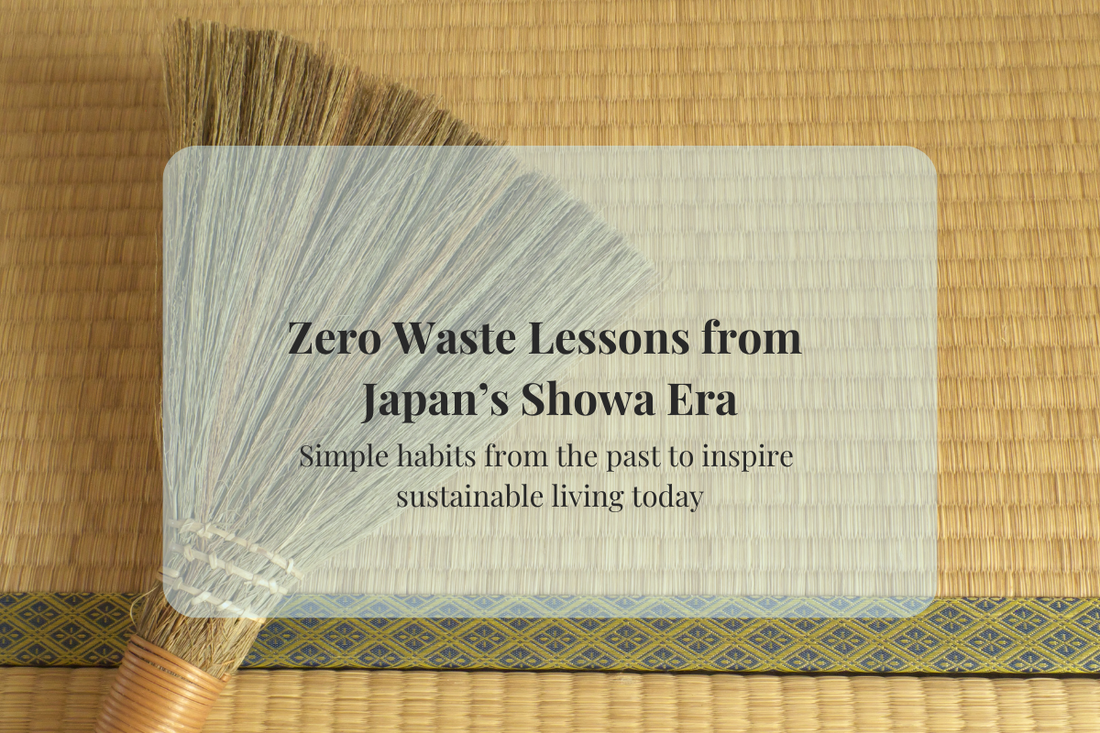
Zero Waste Lessons from Showa-Era Living in Japan
When I was a child, I spent some time living with my grandparents in Japan. Daily life in their home was simple but full of small, practical habits that reduced waste. At the time, no one used words like sustainability or zero waste, yet the way they lived embodied these ideas.
Cleaning and Reuse
- Used tea leaves were sprinkled on tatami mats before sweeping. They kept dust down and left a fresh scent.
- Damp newspaper was used to polish windows until they shone.
- Worn-out cloth was stitched into rags and reused until the very end.
Takeaway today: Replace single-use cleaning wipes with rags made from old clothes. Try tea leaves or baking soda as natural cleaners.
Kitchen Wisdom
- Vegetable scraps were turned into pickles or broth.
- Rice-washing water was reused for mopping or watering plants.
- Foods were preserved through drying, pickling, or fermenting.
- My grandmother made miso and pickled plums at home—we never bought them.
Takeaway today: Cook more with seasonal ingredients, make your own pickles, and think twice before throwing scraps away.
Fuel and Energy
- My grandfather loved cooking fish on a small charcoal grill (shichirin).
- The leftover heat simmered stews or kept food warm.
- In summer, people stayed cool by sprinkling water outside, hanging bamboo blinds, and allowing natural airflow.
Takeaway today: Reduce reliance on air conditioning. Explore passive cooling like shading, airflow, and natural materials.
Clothing and Fabric
- Kimonos were tailored and reused for generations.
- Tears were mended with sashiko stitching or patching.
- Fabric ended its life as a rag or diaper—nothing was wasted.
Takeaway today: Repair clothes, upcycle fabric, and value textiles as resources, not disposables.
Everyday Tools
- Wooden and bamboo tools were kept in use for decades by repairing.
- Bamboo baskets and trays returned to the soil or were burned as fuel when no longer useful.
Takeaway today: Choose natural, durable materials and tools that can be repaired or composted at the end of life.
Why This Matters Today
Modern convenience makes it easy to buy, replace, and throw away. But the Showa-era mindset shows another path: make do, repair, reuse, and adapt.
This isn’t about going back in time. It’s about finding balance and remembering that small, practical choices add up.
Furoshiki: The Ultimate Zero Waste Tool
One item that perfectly reflects this wisdom is the furoshiki, a simple square of cloth.
- Wrap and carry groceries or gifts
- Use as a table cover, picnic cloth, or storage wrap
- Fold it small, keep it in your bag, and reuse endlessly
- In emergencies, it can bundle belongings, provide privacy in shelters, or serve as a bandage
Takeaway today: A furoshiki is reusable, versatile, and timeless—an ideal zero waste essential for modern life.
Final Thoughts
Showa-era living wasn’t glamorous, but it was practical, resourceful, and deeply connected to the idea of wasting nothing.
By borrowing a few of these habits—reusing scraps, repairing clothes, carrying a furoshiki—you bring not only sustainability into your life but also a sense of care and mindfulness.
Zero waste is not about perfection. It’s about everyday choices. And the wisdom of the past can guide us toward a more resilient and sustainable future.
